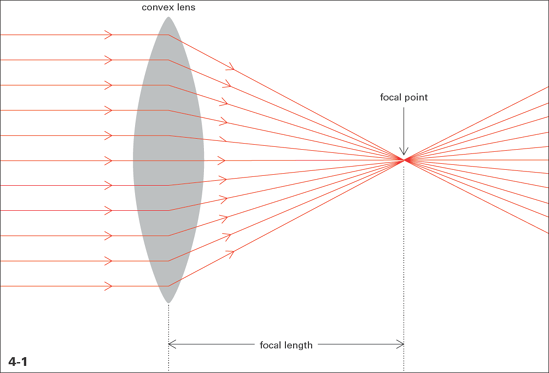4.1. HOW LENSES WORK
The lens acts as the eye of your camera, and, like the human eye, some lenses focus better than others. Some are better at seeing distances; others are better at reading fine print. Camera lenses are typically made of many individual polished glass elements. For the camera, the function is the same: to focus light rays onto a light-sensitive surface, or in this case, a digital sensor. The better the lens does the job, the sharper your picture. The simplest type of lens is a single-element convex lens, the same kind used in a magnifying glass. In profile, it is thick in the middle and tapered at the ends, as in 4-1.
Figure 4-1. A lens takes incoming light and focuses it on a single point of convergence, called the focal point; from there, the light continues on until it strikes the image sensor.

The lens is the optical component of the camera, the part that actually absorbs and bends light. At its simplest, a lens is just a curved piece of glass; at its most complex, it involves numerous elements that are measured, ground, and arranged with subatomic precision. In either case the purpose is the same: to gather beams of light reflecting from an object and focus them to form a real image — an image that looks like the scene in front of you.
How a lens works is surprisingly simple. As light travels from one medium to another, it changes speed. Light travels more ...
Get Canon® EOS Digital Photography Photo Workshop now with the O’Reilly learning platform.
O’Reilly members experience books, live events, courses curated by job role, and more from O’Reilly and nearly 200 top publishers.

